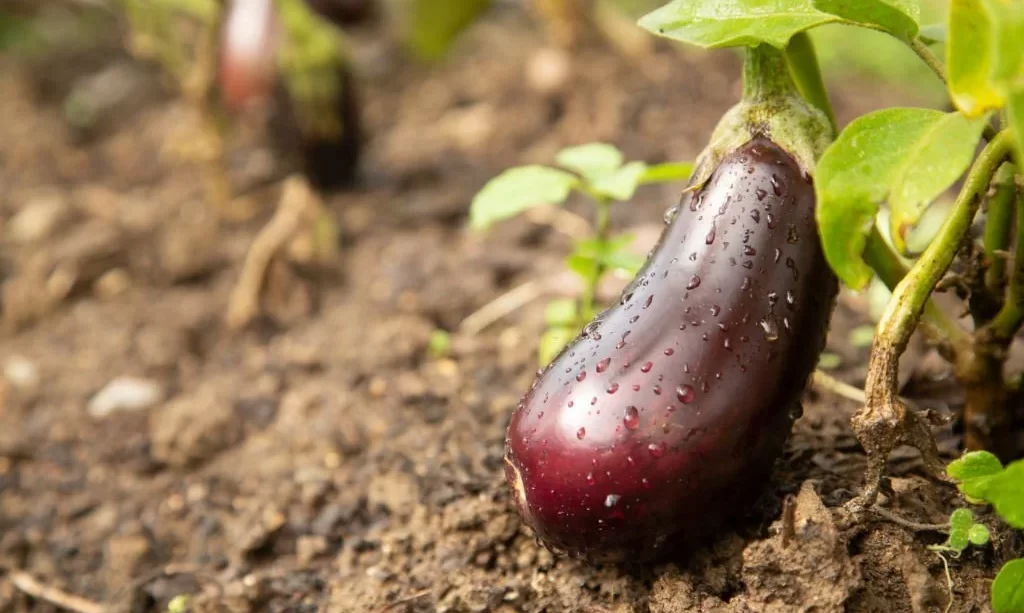Eggplants, with their glossy, purple-black skins and versatile culinary applications, are a beloved addition to gardens and kitchens worldwide. However, cultivating these delectable vegetables successfully involves more than just planting and watering. One key consideration for nurturing thriving eggplant plants is providing adequate support. In this guide, we explore the intriguing question: “Does eggplant need a trellis?” We embark on a journey through the growth habits of eggplants and the benefits of offering them support. Let’s uncover the secrets to cultivating robust eggplant plants and enjoying a bountiful harvest.
- NATURAL WILLOW WICKER FENCE :This expandable faux ivy fence screen are made of real willow wicker and it Can be used for plants to climb or wrap artificial leaves.Our willow wicker fence can be expanded to the size you need.
- EASY INSTALLATION:Expanded or contracted to your desired dimensions,Fully expanded size is 22X120 inch,Fully closed size is 11X47 inch.Binding it to anywhere you want as supporter or fence by zip tie.easy and quick install.Normally we use it in 36X92 inch
- WIDELY USED:The expandable willow trellis can be used as fences,dividers,climbing plant supports,expandable door, trellis.Also is the best support to wrap the led string light to decor your festival Christmas Halloween wall or fence,or hanging other small things,all decide by you,create a better holiday atmosphere
- STRONG CONNECTION:The connecting points between the willow pieces are connected by high quality rivets, strong and turnable.
- COLOR:Nature willow color,100% handmade,no chemical addition.
Eggplant Growth Habits
Before we delve into the trellis debate, it’s essential to understand the inherent growth habits of eggplant plants. Typically, eggplants exhibit a bushy growth pattern, with multiple branches radiating outwards from a central stem. As these plants mature, they tend to produce an abundance of foliage and fruit, and this can lead to some challenges when left unattended.
One of the primary issues gardeners encounter with unsupported eggplants is the risk of top-heavy plants. As eggplants mature and their fruits develop, the weight of the fruit can cause the branches to bend or even break, especially during periods of heavy rain or strong winds. This can not only damage the plants but also reduce the overall yield of eggplants.
Understanding these natural growth habits is crucial when deciding whether or not to provide support for your eggplant plants. While they are not vining plants like cucumbers or beans, eggplants can benefit significantly from proper support, which we will explore in the following sections.
Benefits of Using a Trellis for Eggplants
The decision to use a trellis for your eggplants offers a range of benefits that can positively impact the health and productivity of your plants. Here are some key advantages:
- Improved Air Circulation: When eggplant foliage is allowed to sprawl on the ground, it can create a dense canopy, limiting air circulation. This can lead to increased humidity and create a conducive environment for fungal diseases. A trellis elevates the plants, allowing air to flow freely and reducing the risk of disease.
- Better Sunlight Exposure: Eggplants thrive in full sunlight. By training them to grow vertically on a trellis, you can ensure that all parts of the plant receive adequate sunlight. This promotes uniform fruit development and maximizes photosynthesis, leading to healthier plants.
- Space Optimization: Trellising eggplants can help you make the most of limited garden space. By growing vertically, you can grow more eggplants in a smaller footprint, making it ideal for gardeners with limited space.
- Easier Harvesting: With eggplants growing vertically, you’ll find it easier to spot and harvest ripe fruits. This reduces the risk of missing fruits hidden beneath the foliage and ensures that you can enjoy your eggplants at their peak of freshness.
- Great size for climbing plants: This outdoor trellis for climbing plants is great for a variety of plants, flowers, vegetables, and more. Each trellis measures 12″ W x 48.25″ H overall and weighs 3 lbs. The stake at the bottom measures 6.25″ H, making the in-ground height of this trellis 42″ H.
- Designed to withstand harsh elements: Place this climbing plant support indoors or outdoors. They are built to hold up against most weather conditions. Each metal plant trellis is made from heavy-duty steel wire with a black, powder-coated finish for added protection.
- Beautiful design complements any space: This outdoor plant trellis is as attractive as the flowers that will grow on it with its stylish diamond pattern design. The set includes 2 lattice trellises that can be used for grapevines, roses, vegetables, plants, and much more. Place them on the patio, lawn, deck, front porch, balcony, or yard.
- Promotes healthy plant growth: This set of 2 diamond-styled metal garden trellises provides healthy climbing space for plant, vine, and rose growth, while also preventing plant, fruit, and vegetable breakage.
- Worry-free purchasing: Sunnydaze Decor backs its products with a 1-year manufacturer’s warranty.
Types of Trellises for Eggplants
Various trellis options are available to support your eggplant plants, and the choice largely depends on your garden’s size and your personal preferences. Here are some common types of trellises suitable for eggplants:
- Stake and String Trellis: This simple and cost-effective option involves placing sturdy stakes in the ground and attaching strings or twine horizontally between them. Eggplants can be tied to the strings as they grow, providing support and guidance.
- Cages: Tomato cages, often readily available at garden supply stores, can also serve as effective trellises for eggplants. Place the cage over the plant and secure the branches to the cage as they grow.
- A-Frame Trellis: An A-frame trellis consists of two stakes or posts arranged in the shape of an ‘A.’ You can drape a netting or mesh material over the frame and guide your eggplants to grow upward.
- Custom Wooden Trellis: For a more permanent and aesthetic option, consider constructing a custom wooden trellis designed to fit your garden’s specific needs. This allows for creativity in design and ensures long-term support for your eggplants.
The type of trellis you choose should align with your garden’s layout and your gardening goals. Each of these trellis designs can effectively elevate and support your eggplants, promoting healthier growth and better harvests.
How to Trellis Eggplants
Trellising eggplants is a straightforward process that can significantly benefit your garden. Here’s a step-by-step guide on how to trellis your eggplant plants:
- Select Your Trellis: Choose the type of trellis that suits your space and preferences. Ensure it’s sturdy enough to support the weight of mature eggplants.
- Prepare the Soil: Before planting your eggplants, prepare the soil by adding organic matter and ensuring good drainage. Eggplants prefer well-draining, fertile soil.
- Plant Your Eggplants: Space your eggplant plants according to their mature size and the trellis design you’ve chosen. If using a stake and string trellis, plant eggplants about 18 inches apart.
- Install the Trellis: Place the trellis in the ground before planting or shortly after. Ensure it’s stable and secure to prevent toppling as the eggplants grow.
- Guide the Growth: As your eggplants grow, gently tie the main stem or branches to the trellis using soft garden twine. Avoid tying too tightly to allow for growth without constriction.
- Pruning and Training: Regularly inspect your eggplants and remove any side shoots or suckers that may develop along the main stem. This encourages the plant to focus its energy on growing vertically.
- Harvest Regularly: Harvest your eggplants when they reach the desired size and color. Be gentle when removing fruits to avoid damaging the plant.
Alternative Support Methods
While trellising is an effective way to support your eggplants, alternative methods can also provide the necessary support:
- Stakes: Insert sturdy stakes next to your eggplant plants and tie the main stems to them as they grow. This method is suitable for smaller gardens or single plants.
- Tomato Cages: Tomato cages are readily available and can be placed around your eggplants, providing support and helping them grow vertically.
- Cradling with Netting: Create a cradle using garden netting or mesh material to support your eggplants as they grow. Ensure the netting is secured to prevent sagging.
- Natural Supports: If you have nearby structures like fences or walls, consider training your eggplants against them. Just make sure they receive adequate sunlight.
Conclusion
In the quest to determine whether eggplants need a trellis, we’ve uncovered the advantages of providing support to these versatile vegetables. Whether you choose a trellis, stakes, cages, or other methods, supporting your eggplants offers benefits like improved air circulation, better access to sunlight, and space optimization. Trellising also helps prevent top-heavy plants and eases the harvesting process.
Ultimately, the decision to trellis your eggplants or use alternative support methods depends on your gardening space and preferences. Whichever method you choose, the goal is to nurture healthy, productive eggplant plants that reward you with delicious fruits throughout the growing season. So, as you embark on your eggplant-growing journey, remember that proper support can make all the difference in a successful harvest.





